- 2 months ago
Milk Supply Drop During Breastfeeding: Causes and Solutions
What Does a Drop in Milk Supply Mean?
A reduction in milk supply refers to a noticeable decrease—or complete stop—in breast milk production while breastfeeding is ongoing. This may be caused by physical, emotional, or environmental factors and is often reversible with timely intervention.
Common Causes of Sudden Milk Supply Drop
1. Decreased Nursing Frequency
- Skipping nursing sessions
- Night feeds being dropped
- Replacing breastfeeds with formula
Milk production works on a demand-supply basis. Less stimulation = less milk.
2. Maternal Stress and Exhaustion
- Sleep deprivation, anxiety, postpartum depression
- Lack of family or emotional support
- Negative thoughts about milk adequacy
High cortisol levels suppress oxytocin, the hormone responsible for milk letdown.
3. Inadequate Fluid or Calorie Intake
- Low daily fluid consumption
- Crash diets or irregular meals
- Insufficient overall nutrition
The body needs adequate hydration and energy to sustain milk production.
4. Hormonal Imbalances Postpartum
- Thyroid disorders (e.g., postpartum thyroiditis)
- Pituitary gland dysfunction
- Conditions like PCOS
These can reduce prolactin and oxytocin levels, disrupting lactation.
5. Medications and Birth Control
- Estrogen-containing contraceptives can suppress milk
- Decongestants, dopamine agonists, and some antidepressants may have similar effects
How to Recognize Low Milk Supply
- Baby seems fussy or unsatisfied after nursing
- Breasts feel persistently soft or empty
- Pumping yields very little or no milk
- Baby has fewer than 5 wet diapers per day
- Weight gain slows or reverses
These signs should prompt a full evaluation of both baby and mother.
Proven Solutions to Increase Milk Supply
1. Frequent and Effective Nursing
- Nurse every 2–3 hours, including nights
- Allow baby to empty both breasts each session
- Ensure proper latch and deep suckling
2. Use a Breast Pump
- Pump after nursing to stimulate additional production
- Consistent pumping sends “make more milk” signals
- Even 10–15 minutes can be beneficial
3. Lactation Consultant Support
- Professional evaluation of latch, position, and milk flow
- Emotional support and personalized strategies
4. Hydration and Nutrition
- Drink 2.5–3 liters of water daily
- Develop a habit of drinking water after each feed
- Eat a balanced diet rich in protein, healthy fats, and carbs
5. Galactagogues (Milk-Boosting Foods)
- Oats, fennel, black cumin, dill, dates, and aniseed may help
- Commercial lactation bars or teas can be tried
- Effectiveness varies; consult a pediatrician if unsure
What If No Milk Is Coming at All?
- Baby should not go hungry — temporary formula may be necessary
- Combine skin-to-skin contact, frequent stimulation, and pumping
- If medical causes are ruled out, patience and consistency are key
Some mothers successfully relactate after a 1–2 week regimen.













